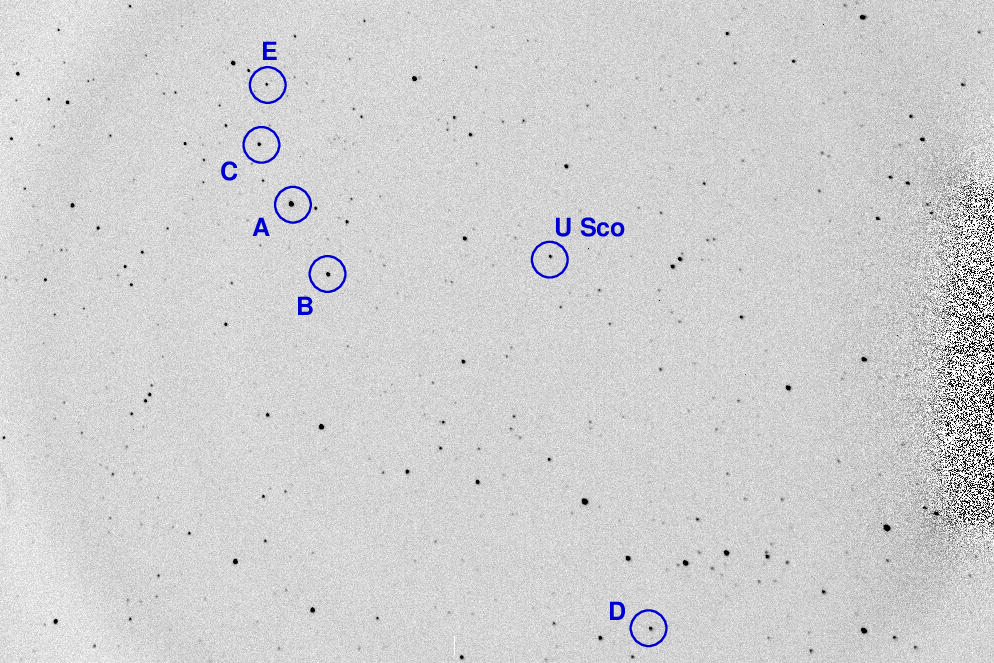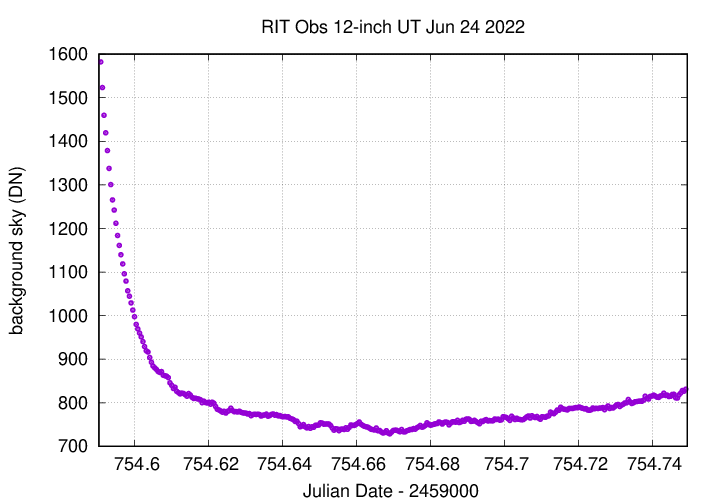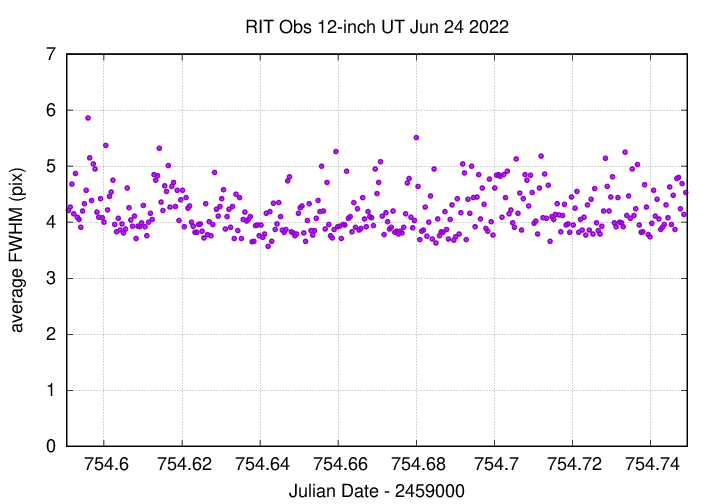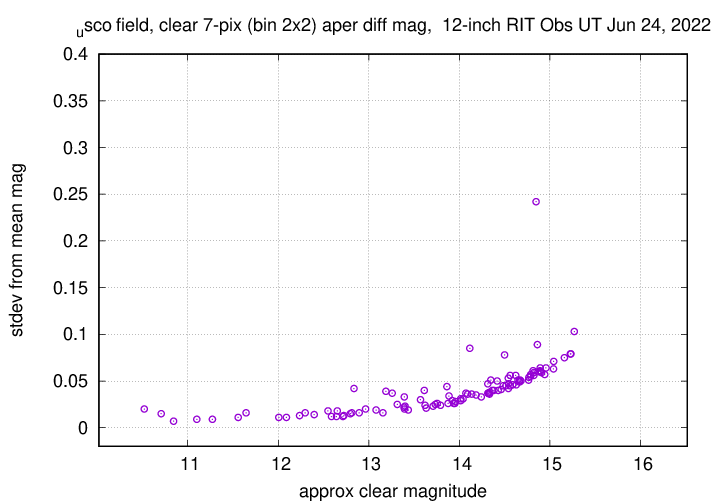
On the night of Jun 23/24, 2022, under very good conditions, I acquired images of the outbursting cataclysmic variable star U Sco.
The target was low in the south, but at least the Moon didn't interfere with the measurements. The sky was dark and clear, so these measurements probably represent the best I can do on this target.
U Sco is a cataclysmic variable which only rarely is caught in an outburst. This one was first noticed at UT 2022 June 6.720 by Masayuki Moriyama. The star reached a peak brightness of about V = 8, but faded quite a bit by this evening; it is currently about V = 14.
The main setup was:
Notes from the night:
The object is located at
RA = 16:22:30.78 Dec = -17:52:42.8 (J2000)
A chart of the field is shown below. The size of the chart is about 42 x 30 arcminutes.

I've marked the location of several comparison stars as well, which appear on the AAVSO chart of comparison stars.
I'll use star "A" to shift my instrumental magnitudes to the V-band scale.
I took a photo of the finder TV's screen when pointing to this target; this could be a useful reference for the future:

The sky value shows no sign of clouds.

The FWHM graph below shows a steady value, despite a drop in temperature of about 6 degrees C.

Using aperture photometry with a radius of 7 pixels in clear filter (binned 2x2, each pixel is 1.24 arcsec, so a radius of 8.7 arcsec), I measured the instrumental magnitudes of a number of reference stars and the target. Following the procedures outlined by Kent Honeycutt's article on inhomogeneous ensemble photometry, I used all stars available in each image to define a reference frame, and measured each star against this frame.
Sigma-vs-mag plots show that the floor was about 0.008 mag, the best so far on this target.

The change in zeropoint shows the effects of high airmass near the end.

The measurements show a clear decline over the observation period.

You can download my measurements below. A copy of the header of the file is shown to explain the format.
# Measurements of U_Sco made at RIT Obs, UT 2022 Jun 24, # in very good conditions, # by Michael Richmond, # using Meade 12-inch LX200 and ATIK 11000. # Exposures 30 seconds long, clear filter. # Tabulated times are midexposure (FITS header time - half exposure length) # and accurate only to +/- 1 second (??). # 'mag' is a differential magnitude based on ensemble photometry # using a circular aperture of radius 7 pix = 8.8 arcseconds. # which has been shifted so AAVSO 000-BBX-431 has mag=10.707 # which is its V-band magnitude according to AAVSO. # # UT_day JD HJD mag uncert Jun24.09041 2459754.59041 2459754.59570 14.056 0.034 Jun24.09086 2459754.59086 2459754.59615 14.068 0.036 Jun24.09132 2459754.59132 2459754.59661 14.062 0.035
Last modified 6/20/2022 by MWR.